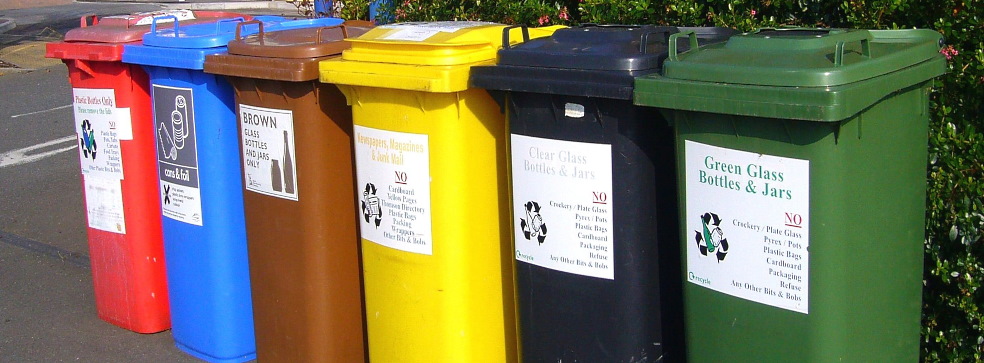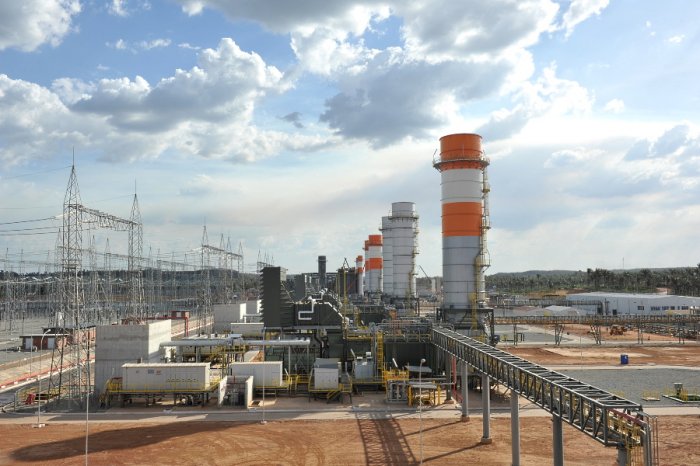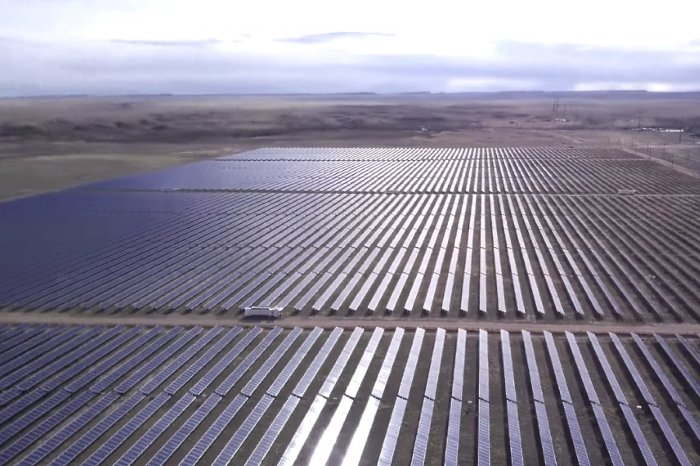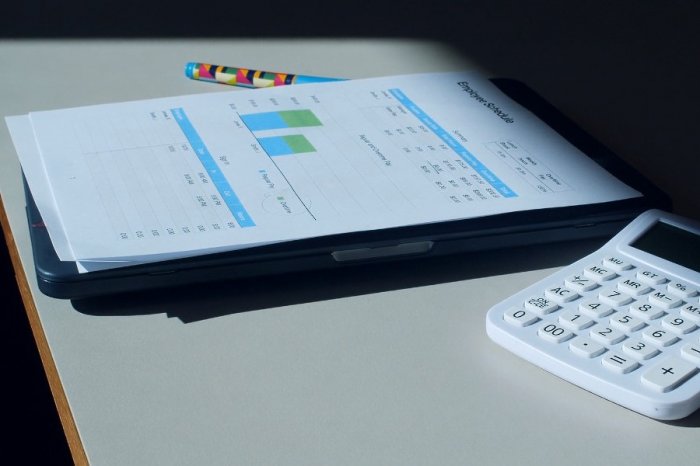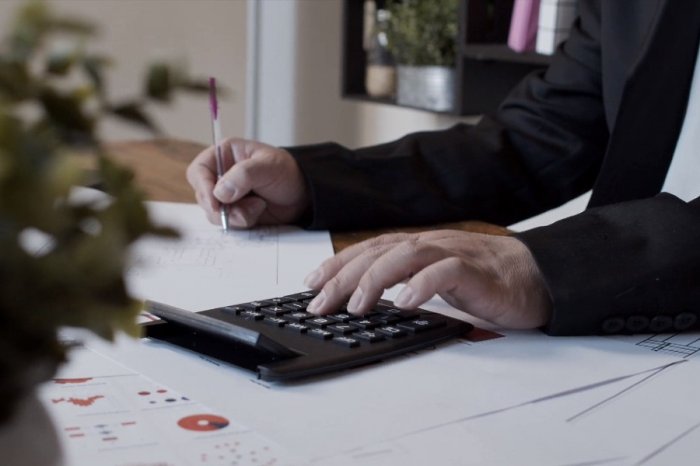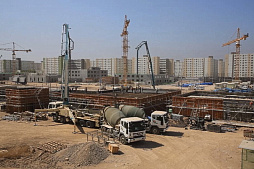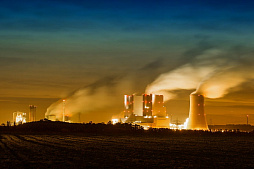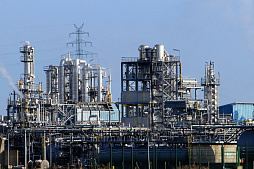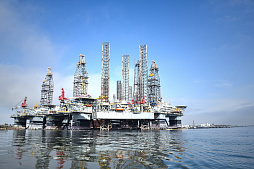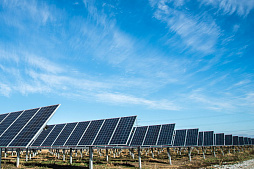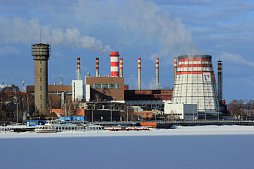After receiving the necessary documents (application form and project presentation), our team will try to review your request as soon as possible, and leading experts will offer the best options for project funding.
The disposal and incineration of solid waste has become an independent and successful industry, which is actively developing worldwide.
Engineering design of waste processing plants and the preparation of technical documentation are the first steps towards the implementation of an investment project.
We and our partners offer a wide selection of technological schemes and individual design solutions for the complete and partial processing of all types of waste.
Specialists design plants that carry out a full cycle of waste processing, including sorting, grinding, pressing, composting, incineration and storage.
Given the individual needs of the business, engineers offer customized solutions for maximum efficiency. The company creates a fully automated mechanical and biological waste processing lines anywhere in the world.
During the design process, engineers take into account technical, economic, environmental, social and urban factors.
The coordinated work of a multidisciplinary team of experts ensures the most effective implementation of the project to achieve the goals of the investor.
The list of services includes:
• development of a project concept;
• structural and architectural design;
• design of all types of waste recycling equipment;
• preparation of detailed documentation for approval of the project;
• holding consultations with government bodies;
• construction, testing and commissioning.
All projects comply with strict international norms and standards.
To learn more about financial and engineering services, contact our consultants.
We will be happy to answer all your questions.
Solid waste processing and recycling methods
Typically, waste is classified as solid, liquid and gaseous. Gaseous waste, as a rule, is released into the atmosphere, while liquid waste is discharged into sewers and natural bodies of water.Solid waste includes food waste, packaging, scrap metal, paper, ash, sludge and other solid and semi-solid materials resulting from household and economic activities. Processing these wastes to recycle materials or energy provides tremendous investment opportunities.
One of the most profitable ways of processing waste is to recover valuable material by modifying the waste or by combining it with other materials.
It depends on the following characteristics:
• rate of waste generation;
• the possibility of reducing the volume;
• environmental hazard of waste;
• physical, chemical and biological properties;
• suitability of waste for recycling;
• suitability of waste for incineration;
• suitability for composting, etc.
Solid waste processing is an expensive and technically challenging task, especially for developing countries. This leads to the accumulation of garbage around settlements, overflowing landfills and growing environmental stress.
Rapid population growth, intensive industrial development and changing consumer habits exacerbate the problem of waste processing. Investments in the construction of modern waste processing plants and waste incineration complexes solve numerous social and economic problems.
Sanitary landfills
Landfill is considered the cheapest way to dispose of solid waste.More than half of the world's total waste volume goes to landfills.
Modern landfill equipment with double and triple barriers to prevent the release of toxic materials into the environment. Usually they have high-tech systems for collecting and cleaning leachate, as well as automated sensors for detecting leaks.
The liquid and toxic gas that forms during the degradation of garbage are continuously collected and used for their intended purpose. Erosion control systems ensure the complete safety of sanitary landfills for the environment, including groundwater.
Sanitary landfills usually consist of several separate cells, in which waste of a certain chemical composition is accumulated in isolation. Multilayer barriers between cells control the leakage of potentially toxic liquids and gases.
The suitability of specific waste for disposal is determined by their physical and chemical properties and the risk of leaching of toxic substances. Moisture content, particle size, reactivity, etc. are taken into account.
A properly equipped municipal solid waste landfill (MSWLF) should not harm humans and the environment throughout the life of the facility and after its closure. Innovative technologies allow burying significant amounts of waste in a limited area.
However, the construction of new landfills is limited by difficulties in finding safe land plots, as well as political and social considerations.
When designing waste recycling plants for our customers, we use highly efficient technologies to extract the most valuable materials. Traditionally, our solid waste processing equipment is focused on reducing the amount of waste that goes to landfills.
Solid waste incineration
Burning is a process of controlled burning of garbage to produce simple substances and energy.During this chemical reaction, nitrogen, carbon and other elements are oxidized in the combustion zone and generate a large amount of heat.
Currently, only a small percentage of solid waste in the world goes to incinerators. However, in Japan and several other developed countries, incineration has already become the main solution to the problem of solid waste.
When designing incinerators, strict environmental standards are always taken into account. Modern waste incineration technologies are aimed at turning solid waste into inert and safe materials with a significant reduction in the initial volume.
Engineers are engaged in the engineering design of waste incineration facilities around the world. The company designs individual solutions taking into account the type of waste and the characteristics of a particular project.
With incomplete combustion, which usually occurs outdoors, significant amounts of smoke are generated. We use special high-temperature equipment to add excess air and control the operating temperature. This is done with the aim of the most complete combustion, minimizing harmful emissions and eliminating unpleasant odors.
Incinerators that support a combustion temperature of 1000-1100 ° C provide the maximum release of thermal energy and the most complete burning of garbage.
Chemical transformation of components during combustion may vary. Carbon and nitrogen are converted to gaseous oxides, sand and some other inert substances are converted to ash, and ferrous metals usually remain unchanged.
Depending on the technology of incineration and the initial composition of the waste, the incineration process reduces the mass of waste by 70-80%.
Incinerator complexes offer tremendous economic benefits due to a significant reduction in the need for transportation and disposal of waste in landfills.
What should be considered by an investor:
• the burning of garbage is always accompanied by the emission of ash, which requires subsequent disposal in sanitary landfills.
• incineration of unsorted waste leads to the loss of valuable materials that can be recovered and sold to manufacturers.
• incineration requires pre-conditioning of solid waste, which involves grinding, drying and other processes.
• solid waste incineration is associated with certain environmental issues.
• the operation and maintenance of incinerators requires a skilled workforce and significant costs.
In general, incinerators are an optimal short-term solution for converting potentially useful material into electrical and thermal energy.
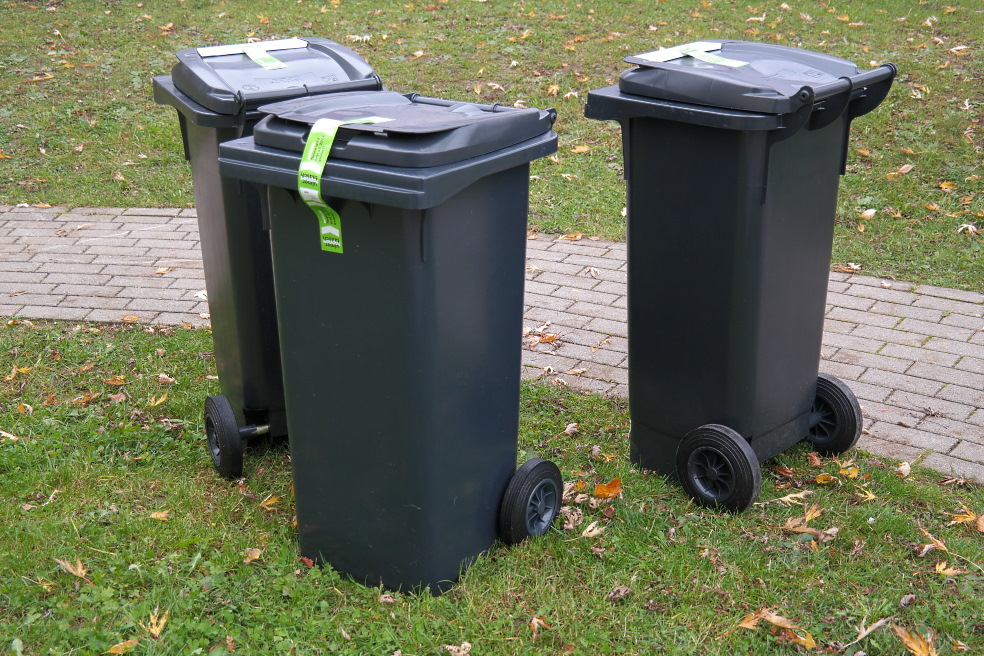
Solid waste composting
The composting process is a biochemical decomposition of organic solid waste with the formation of a compost-like output (CLO), which can be used for agricultural or other purposes.According to some estimates, up to 30% of municipal solid waste can be composted.
This is the only natural technology for converting organic waste (including paper, food waste and biological waste) into a new fertile soil. A compost-like output formed in the composting process is a valuable commercial product.
Compost-like output reduces soil erosion and increases its fertility, therefore CLO is in demand among agricultural producers.
The process of composting solid waste takes from 6 to 24 weeks. This process can occur in both natural and artificial environments. Thanks to new technologies, the composting plant is completely environmentally friendly.
Composting is the interaction of organic material with bacteria in an oxygen environment. Heat, nitrogenous products, carbon dioxide and water are continuously released as a result of this process. The plant can use all of these products.
In addition, composting solid organic waste significantly reduces the amount of garbage that must be transported and disposed of in landfills.
Our garbage recycling plant design services include the development of tailor-made technical solutions for producing compost-like substances. Engineers will offer the best ways to use this technology.
What should be considered by an investor:
• composting is an effective way to use certain types of solid waste, especially MSW;
• composting requires the separation of organic matter from other solid waste, which involves sorting other valuable materials;
• composting is associated with high initial investment costs;
• the operation and maintenance of composting plant requires skilled labor;
• the market for compost-like substances is unstable in most countries.
Solid waste recycling
Recycling is a multi-step process for the separation, processing and marketing of valuable recoverable materials that can be reused.Solid waste recycling reduces dependence on incinerators and landfills, protects the environment and creates the conditions for economic growth.
Due to the reduction of landfills and the potential saving of natural resources, modern waste recycling plants are becoming a priority throughout the world. Separation of waste is considered to be a cost-effective way of managing waste, the most suitable for municipal solid waste.
Waste recycling plants such valuable materials as paper, cardboard, ferrous and non-ferrous metals, glass, plastic, rubber, etc. About 30-35% of solid waste is recyclable.
This is a huge window of opportunity for investors.
Metals
Most elements of the periodic table are metals that are mined from the bowels of the earth. Since metals are not biodegradable, their disposal is discussed in most industrial countries.The reduction of iron and aluminum using modern technology makes it possible to repeatedly process these metals without compromising quality. During processing, metals are melted and converted into a new form.
Metal processing saves 90-95% of energy compared to the production of new material.
Paper and cardboard
Pulp and paper products can be processed up to seven times. Subsequently, the material is burned in an incinerator to produce thermal or electrical energy.The quality of recycled paper depends on the length of the fibers. The larger the fragments, the longer the fibers. Excessive grinding of the fibers will deteriorate the quality of the material.
Paper recycling saves up to 75% energy compared to producing new material.
Glass
As with iron and aluminum, glass can be recycled multiple times without compromising quality. This makes recycled glass an extremely valuable resource.Glass recycling saves more than 20% energy compared to producing a new product. From a technological point of view, it is important to maintain the purity of the glass, ensuring careful sorting.
Wood
ESFC, with its trusted partners, offers innovative equipment for burning wood as fuel or using it for the production of paper and cardboard. We provide strict quality control so that the final product will not contain potentially hazardous substances.Experienced specialists in the design of waste recycling plants strive to ensure high economic efficiency and return on investment. Modern plants can turn up to 95% of solid waste into valuable commercial materials.
Biogasification
Biogas is formed as a result of biodegradation of organic matter under anaerobic conditions. Biogas is a valuable source of renewable energy. This product is a mixture of methane, carbon dioxide and other substances.Waste processing plants can produce significant amounts of biogas, which is used to generate electricity and heat. Biogasification makes a significant contribution to the economic growth.
The company is developing anaerobic digestion systems that are tailored to individual customer needs. The essence of the technological process is the sorting and grinding of organic waste with its subsequent biodegradation in special anaerobic chambers.
The obvious advantage of biogasification is the production of valuable fuel, which reduces the company's needs for an external source of electricity or heat. It is a clean source of energy that replaces fossil fuels.
What should be considered by an investor:
• biogasification can be more expensive than other methods, therefore, large-scale investments are required to achieve the desired economic indicators;
• biogasification requires the use of sophisticated cleaning technologies to prevent any unpleasant odors from biodegradable waste.
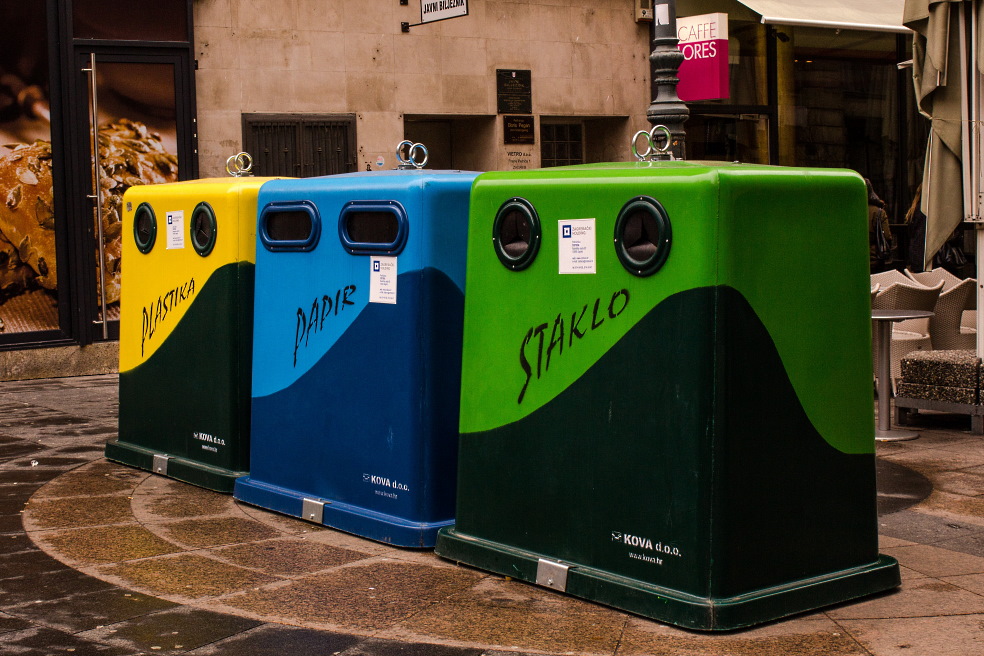
Waste recycling plant design
The development of the concept of a new enterprise begins with the study of raw materials and the possibilities of obtaining recycled materials.In the context of increasing return on investment, it is important to restore as many basic valuable materials as possible.
These are ferrous and non-ferrous metals, plastic, glass and paper.
The most profitable are the following materials:
• wood;
• black metal;
• non-ferrous metal;
• packing cardboard;
• mixed and office paper;
• polypropylene and HDPE;
• color and transparent PET.
In terms of environmental impact (carbon dioxide emissions), the most important is the recovery of ferrous and non-ferrous metals. The steel production emits 5-7 times more CO2 than the recycling.
The recyclables listed above can be a good basis for the concept of a recycling plant. However, the needs of the investor and the situation in a particular market may vary significantly. Our experts individually approach each case at the stage of the feasibility study.
Basic concept and flowcharts of technological processes
The most important stage in the design of waste recycling plants is the development of the basic concept and flowcharts of each process.At this stage, engineers use the latest methods and software tools to ensure that the project meets the expectations of the investor. The basic concept of the MSW sorting complex is as follows.
Part of the solid waste goes to the plant in bags, so first they have to be opened using bag openers. Then the waste is separated on a sorting line.
Behind the bag opener and sorting line, powerful magnets remove large metal elements. The metal is sent to a separate sorting line.
Eddy current equipment, a magnetic separator and an optical sorting machine are used to separate the main fractions of municipal solid waste. But to achieve the optimal result, this technological process requires preliminary sorting of solid waste by size.
During the sorting process, the waste is divided into several fractions depending on size and shape. If the particles are larger than the specified size, they are sent to the MSW grinder for thorough grinding before returning to the sorting line.
The task of our engineers is to choose the most economical and effective solution for each technological process in order to maintain high quality standards.
Engineering design of MSW sorting lines
Based on the concept, detailed drawings of each sorting line, unit and assembly are created; drawings of buildings, structures and necessary infrastructure are being prepared.The design of the MSW sorting line is carried out taking into account the estimated composition of the waste and the specific needs of the business. Some enterprises focus on the recovery of ferrous and non-ferrous metals, while others are engaged in plastics.
In general, the sorting line should effectively separate metals, various types of polymers, wood, rubber, paper and cardboard. The remaining waste is used as fuel.
For the processing of ferrous metals, the most affordable sorting technology is magnetic separation. A magnetic separator is located above the conveyor belt. Here, the magnetic metals are attracted to the magnet and removed from the mixed waste stream.
Ferrous metals are sorted using sensor technology, but magnetic separation is considered a more economical and simpler solution. Non-ferrous metals can be sorted using eddy currents.
Near-infrared (NIR) technology can be used to separate the remaining fractions of materials. When passing through a scanner, the computer identifies materials using the infrared spectrum. This is a simple and reliable technology that is used in waste recycling plants around the world.
At the preliminary sorting stage, the waste is separated by size in order to simplify the further work of the automation. Trommel screen with holes of different diameters quickly and efficiently divides the waste stream into several fractions.
Another way to separate the waste is to separate the light material from the heavy material using a ballistic separator. This equipment makes objects with different weights move in different directions.
After sorting, the question arises of storing volume fractions, such as plastic, paper and cardboard. When the container is full, the material is transported to a baling press, which compresses it into compact cubes.
The task of the engineering design of the MSW sorting line is to ensure the most efficient separation of solid waste fractions and reduce storage costs. For other fractions that cannot be compressed into bales, namely metals and wood, special storage containers can be used.
Experts use the latest software for 3D visualization of equipment, as well as effective technical tools for performing photogrammetry of the construction site.
Are you interested in the design or financing of a waste processing plant?
Contact our consultants for details.
We and our partners have developed many successful projects in Europe, Asia, Africa and South America.
The experience of the best specialists is the key to the success of your investment.



